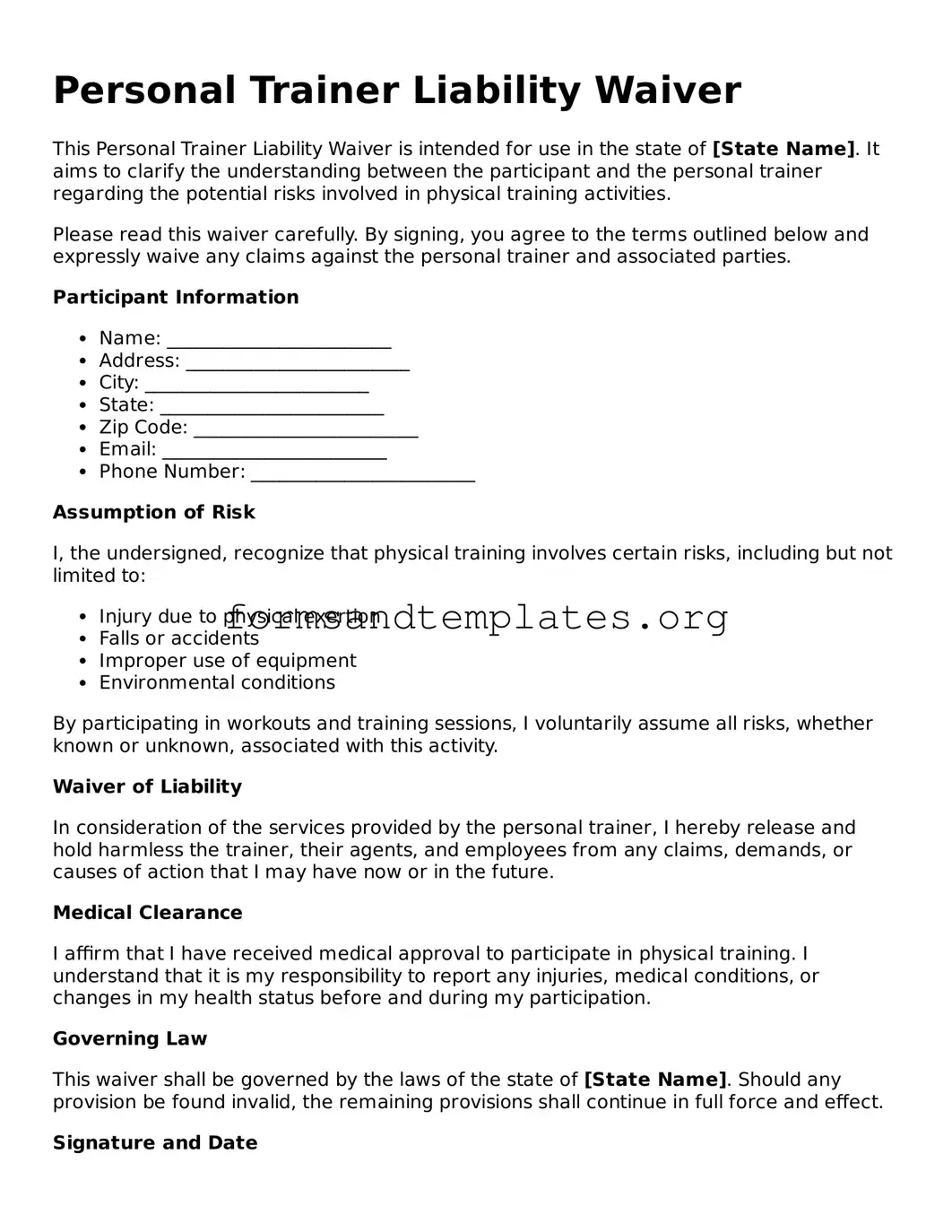Personal Trainer Liability Waiver
This Personal Trainer Liability Waiver is intended for use in the state of [State Name]. It aims to clarify the understanding between the participant and the personal trainer regarding the potential risks involved in physical training activities.
Please read this waiver carefully. By signing, you agree to the terms outlined below and expressly waive any claims against the personal trainer and associated parties.
Participant Information
- Name: ________________________
- Address: ________________________
- City: ________________________
- State: ________________________
- Zip Code: ________________________
- Email: ________________________
- Phone Number: ________________________
Assumption of Risk
I, the undersigned, recognize that physical training involves certain risks, including but not limited to:
- Injury due to physical exertion
- Falls or accidents
- Improper use of equipment
- Environmental conditions
By participating in workouts and training sessions, I voluntarily assume all risks, whether known or unknown, associated with this activity.
Waiver of Liability
In consideration of the services provided by the personal trainer, I hereby release and hold harmless the trainer, their agents, and employees from any claims, demands, or causes of action that I may have now or in the future.
Medical Clearance
I affirm that I have received medical approval to participate in physical training. I understand that it is my responsibility to report any injuries, medical conditions, or changes in my health status before and during my participation.
Governing Law
This waiver shall be governed by the laws of the state of [State Name]. Should any provision be found invalid, the remaining provisions shall continue in full force and effect.
Signature and Date
- Participant Signature: ________________________
- Date: ________________________
Trainer’s Signature
- Trainer Signature: ________________________
- Date: ________________________
